

Conference Record #57697

Near by Places
There are four holy shrines in Uttarakhand dedicated to Hindu Gods and holy rivers of India. The four shrines are situated within the Garhwal Region. These are collectively referred as "Char Dhaam of Uttarakhand" . Pilgrims from all over India and abroad visit the shrines as "Char Dhaam Yatra". In Hindu religion, Char Dhaam Yatra holds has great importance and sanctity. It is believed that every Hindu should undertake Char Dhaam Yatra at least once in a life time to avail the blessings of gods adorning the shrines. For more information kindly visit https://uttarakhandtourism.gov.in
Chopta (at an approximate altitude of 2,608 m) is a beautiful hill station and a superb trekking destination in Uttarakhand popularly referred to as the ‘mini Switzerland’ of Uttarakhand. Surrounded by bugyals or velvety meadows and pristine snow-capped peaks, Chopta is an all-year holiday destination: pleasant in summer, rain-fresh in monsoon and a snow-clad fairyland in winter. Chopta is at the epicentre of the Panch Kedar – the five most sacred Shiva temples in the state. On its left are located Kedarnath and Madmaheshwar shrines and on the right, Rudranath and Kalpeshwar, and just above it, the Tungnath temple. Chopta not only attracts Indian but International tourists and trekkers all-round the year. Chopta is the base for various trekking destinations like Tungnath, Chandrashila and more.
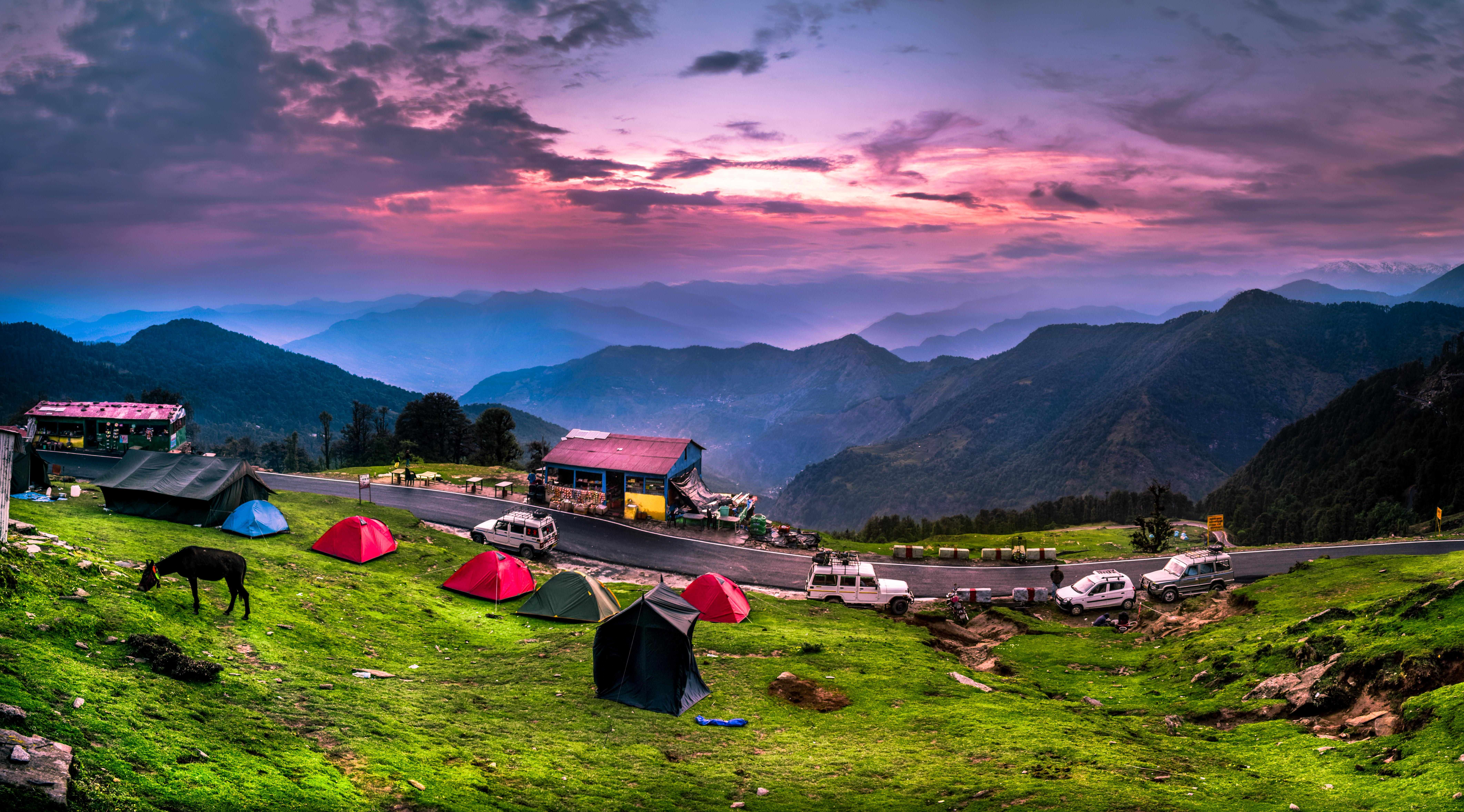
One of the most revered temple destinations of India, Kedarnath town is nestled in the mighty Garhwal Himalayas. The town, built around the revered Kedarnath temple, is located at an altitude of 3,580 m, near Chorabari glacier, which is the source of the Mandakini river. Dedicated to Lord Shiva, the ancient temple has exquisite architecture and is built of extremely large but evenly shaped grey stone slabs. A conical rock formation inside the temple is worshipped as Lord Shiva in his “Sadashiva” form. The Kedarnath temple, dedicated to Lord Shiva, is a part of Char Dham pilgrimage circuit, and is one of the 12 Jyotirlingas of Lord Shiva in India. Behind the Kedarnath temple, stand the Kedarnath peak, Kedar Dome and other Himalayan peaks.
The Badrinath Temple also known as the Badrinarayan Temple, located in Uttarakhand's Badrinath town, is one of the Char Dhams (four important pilgrimages) in the state. There are four pilgrim-destinations namely Yamunotri, Gangotri, Kedarnath, and Badrinath, collectively known as Char Dham. These pilgrimage centres draw large number of pilgrims each year, thus becoming the most important hubs of religious travel in the whole of Northern India. Badrinath is located at an elevation of around 3,100 m. Located in the Garhwal Himalayas, on the banks of the Alaknanda river, this sacred town lies between Nar and Narayana mountain ranges. The temple is believed to have been established by sage Adi Shankaracharya in the 8th century. With Lord Vishnu as its presiding deity, the temple remains open for six months in a year. In winter it becomes inaccessible due to heavy snowfall.
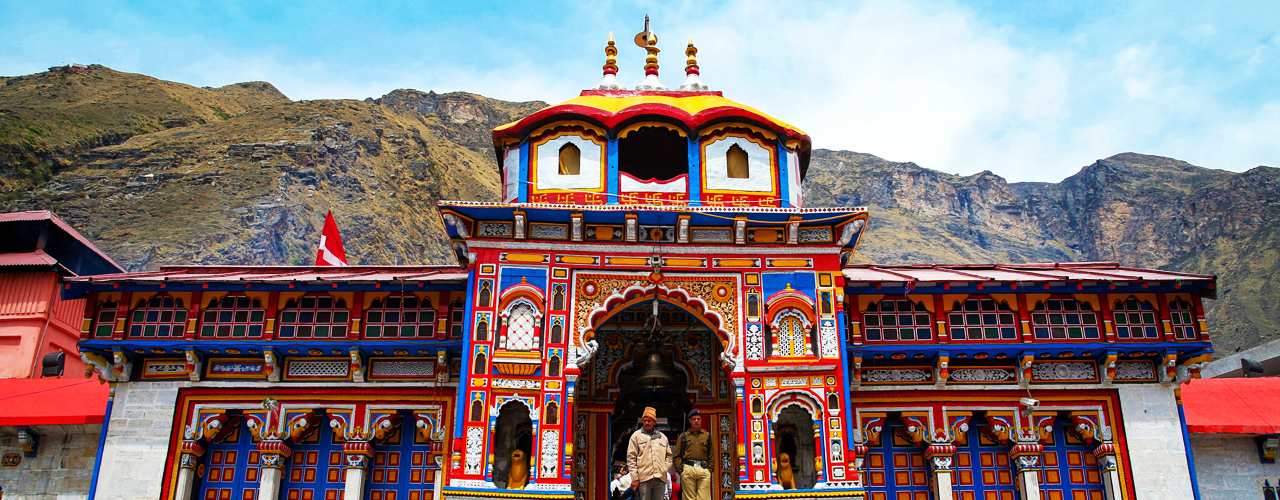
Fascinating history and intriguing mythology meet at the crossroads of this beautiful hill-station, one of the most popular in the country. Just 240 km from Delhi, nestled in the rolling Doon Valley and at the foothills of the Himalayas, Dehradun is surrounded by high mountains and lush Sal forests. Known for its pleasant year-round weather and scenic surroundings, the city is a gateway to several popular hill- stations like Mussoorie and pilgrimage sites like Haridwar and Rishikesh. Offering a blend of unparalleled landscape and modern amenities, bustling Dehradun is a city for both business and leisure. Once a retirement haven, today it buzzes with excitement, yet has managed to retain its laid-back vibe. Quaint cafés and lounges rub shoulders with heritage monuments and bazaars. The education hub of northern India, the city is home to iconic institutions like Welham and Doon School, alma mater of stalwarts like former Prime Minister Rajiv Gandhi, Olympian Abhinav Bindra, and renowned author Amitav Ghosh. The Indian Military Academy is also located here. Said to have been established by Sikh guru Ram Rai in 1675, the city is also known as the abode of Dronacharya, the famed teacher from the epic Mahabharata. Fascinating history and intriguing mythology meet at the crossroads of this beautiful town, one of the most popular vacation spots in the country.
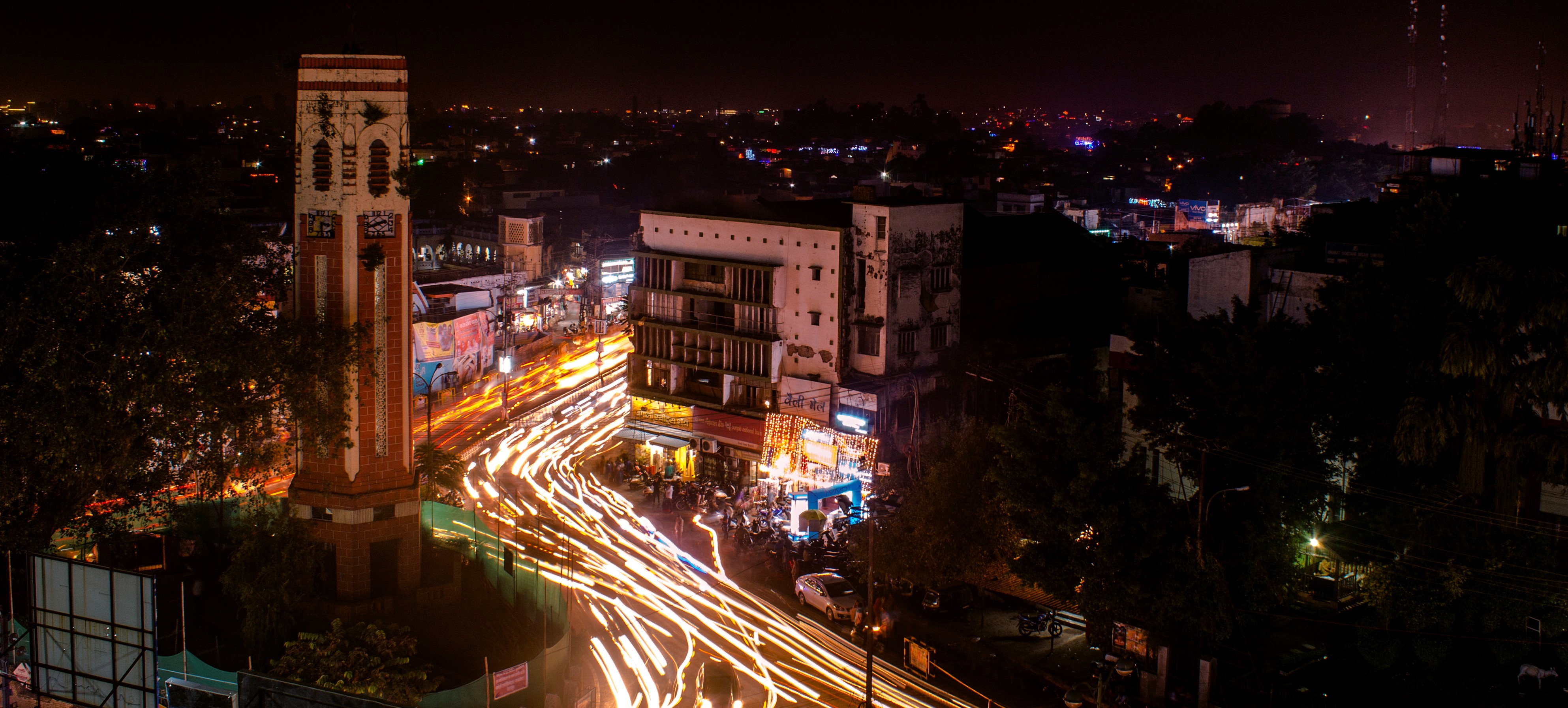
One of the holiest pilgrimages in India, Haridwar, or the ‘gateway to gods’, is located where Ganga, the sacredest of all Indian rivers, enters the Indo-Gangetic plains. Located at the foothills of the Himalayas, Haridwar is a city of temples and ashrams and its pious ambience envelops everyone. Haridwar is one of the four holy Indian cities that host the Kumbh Mela, a pious gathering of millions of Hindu devotees every 12 years. The Ardh Kumbh is organised here every six years. It also hosts the Kanwar mela every year during the rainy season. The ‘Panch Tirth’ or the five pilgrimages located within the periphery of Haridwar, are Gangadwara (Har Ki Pauri), Kushwart (Ghat), Kankhal, Bilwa Tirtha (Mansa Devi Temple) and Neel Parvat (Chandi Devi). Haridwar serves as the gateway to the Char Dham of Uttarakhand as well. An ancient city, Haridwar's roots are steeped deep in culture and traditions of the ancient Vedic times, and there are several institutions here imparting traditional knowledge of wellness. If you want to know more and experience the ancient methods of healing, there are many certified Ayurvedic clinics in Haridwar that you can visit. Ashrams also offer sessions in Ayurveda, meditation and yoga. Every morning and evening, the ghats (stepped banks of a river) of River Ganga witnesses the blissful Ganga aarti, which attracts devotees and tourists. The evening ritual being more popular, it makes for a mesmeric sight to see the river being venerated with loud and rhythmic chants and tall lamps, their lights lightening up the darkening waters. It is a spectacular sight as thousands of small diyas (earthen lamps) are set afloat on the river.
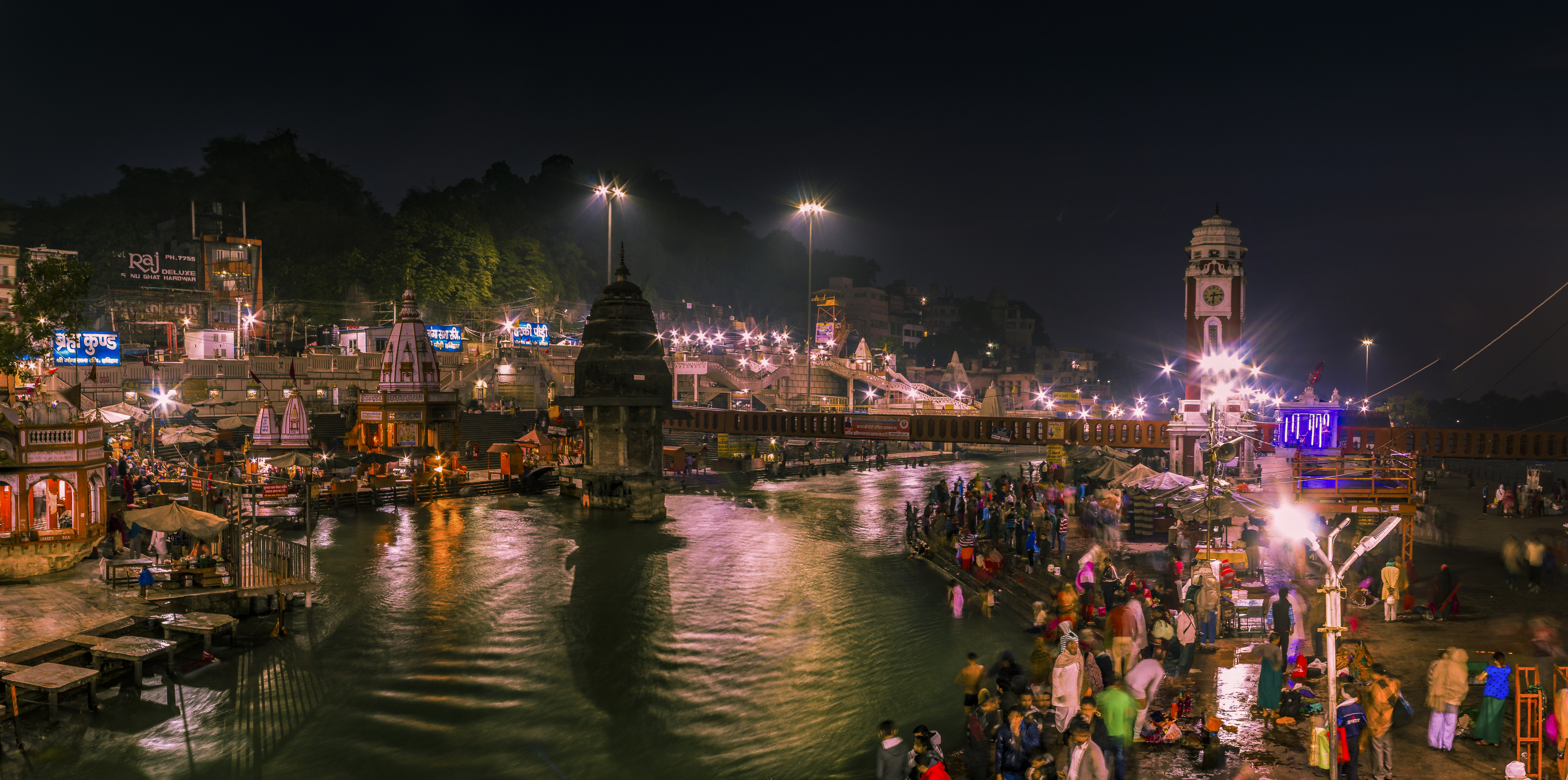
Devbhoomi Uttarakhand is home to many legends; some poplar while others not-so- often repeated, like the one about Lord Kartik. Perched on a hilltop near the village of Kanakchauri, Rudraprayag, the Kartik Swami temple is one of the most prominent ones dedicated to Lord Shiva's son Lord Kartik, in the state. Situated atop Kronch Parvat, the temple pays homage to Lord Kartik, also known as Lord Muruga or Lord Murugan in parts of India, and his devotion to his parents. While there are many legends about this temple, the most popular one dates back to the era when Lord Shiva and Goddess Parvati's two sons - Lord Kartik and Lord Ganesha - were asked to circumambulate the universe seven times. Lord Kartik set off on the expedition, undertaking the challenging task of taking seven rounds of the universe, whereas, Lord Ganesha took rounds of his parents, referring to them as his universe. When Lord Kartik returned and learnt of how Lord Ganesha had completed the task and won the appreciation of Lord Shiva, he was enraged. The Puranas say that an angry Lord Kartik left Kailash, his parents' abode, and arrived at Kronch Parvat. Some legends say that after this, Lord Kartik went to a mountain named Srisailam in Southern India, where he was known as Skanda, one of his many names apart from Lord Muruga, Lord Murugan and Lord Subramanya. Others say, Lord Kartik was so furious, he sacrificed his physical self at Kronch Parvat to appease his parents. The temple sits atop the mountain, silhouetted against the backdrop of snow-covered Himalayan peaks, painting a dreamy image. When it rains, the ambience becomes surreal and it seems the temple is rising from the clouds. A 3-km trek from Kanakchauri village ending with an 80-step-climb leads to the serene temple adorned with thousands of bells. It is believed that offering a bell here on Kartik Purnima can make one's wishes come true. The sandhya aarti or evening prayers are especially enchanting here, with the entire temple premises echoing with tolling bells and hymns.
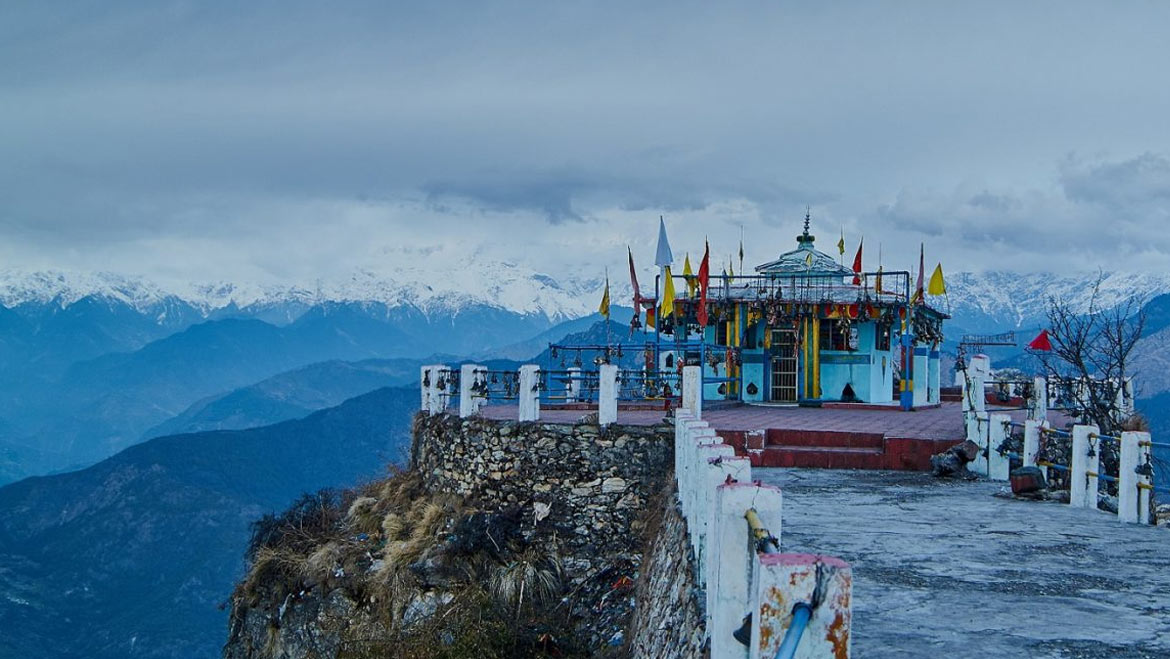
Set against the backdrop of the Himalayas and with the pristine Ganga flowing through it, the ancient town of Rishikesh is one of the major tourist and pilgrimage hubs in northern India, where people from across the world arrive in search of peace. Rishikesh is commonly referred to as the ‘yoga capital of the world’ and rightly so. The destination is abuzz with visitors, who come here to learn yoga and meditation. Rishikesh has numerous ashrams, some of which are internationally recognised as centres of philosophical studies, yoga and other ancient Indian traditions of wellness. The Uttarakhand Tourism Development Board organises the annual International Yog Festival (IYF) here, which attracts thousands of yoga enthusiasts. There are several legends associated with Rishikesh. It is said Rishikesh finds a mention in the ancient text Skanda Purana, and in the epic Ramayana. It is said Lord Rama, along with his brothers, came to Rishikesh to do penance after killing Ravana. Rishikesh is also known for its connection with The Beatles. In February 1968, members of the legendary English rock band visited Maharishi Mahesh Yogi's ashram (now popularly known as the Beatles Ashram) to learn transcendental meditation. The band composed nearly 48 songs during their time at the Maharishi's ashram, many of which appear on the White Album (and a few from Abbey Road). John Lennon recorded a song titled, 'The Happy Rishikesh Song' after his visit. Several other international artists, including Mike Love of the Beach Boys, Paul Horn, Donovan and Gyp Mills, visited the site to contemplate and meditate. Rishikesh is also a town of quaint cafes, which offer local and international cuisines and are mostly packed with tourists. Interestingly, in the last couple of years, Rishikesh has become very popular for its vibrant Holi celebrations, mostly organised by private hotels and resorts

A modern town and the headquarter of the Tehri-Garhwal district, New Tehri is an adventure tourism hub. Overlooking the massive Tehri Lake and dam, the well-planned town draws tourists, who come here for its natural beauty and the opportunity to enjoy innumerable water sports in the lake. The dam is the highest of its kind in India and is regarded among the world's largest hydroelectric projects. It stands on the Bhagirathi river. Tehri (also referred to as Old Tehri now) was a small town situated at the confluence of Bhagirathi and Bhilangna rivers in Uttarakhand. It was the capital of the erstwhile kingdom of Garhwal. This town got submerged under the lake formed during the construction of the Tehri dam. The residents were relocated to New Tehri. New Tehri is perched high on a hill and offers the serenity of a hill-station. Surrounded by beautiful temples and dense forests, and set against soaring Himalayan peaks, New Tehri is an ideal vacation spot. Several adventure events are organised here throughout the year, the most popular being the (Tehri Lake Festival).

This beautiful gurudwara, also known as Gurudwara Sri Hemkunt Sahib Ji, is situated at an altitude of around 4,329 m, on the bank of the pristine Hemkund Lake . One of the most revered Sikh shrines, Hemkunt Sahib (also known as Hemkund Sahib) draws thousands of pilgrims every year. It is recorded in the holy Granth Sahib that the tenth guru of Sikhs, Guru Govind Singh, meditated by the serene banks of Hemkund lake in one of his earlier births. Surrounded by snow-capped peaks, the gurudwara's picturesque natural settings and trek routes, including the one to the Valley of Flowers, make it a popular destination for trekkers and tourists. Himganga, a small stream, originates from the lake. It is said Lakshmana, the younger brother of Lord Rama from the epic Ramayana, regained his health by meditating on the banks of Hemkund after the severe injuries he received in the war. The Lakshmana temple is said to have been built at the place where Lakshmana meditated. The gurudwara remains enveloped by snow during winter and every year, in summer, it re-opens for the annual pilgrimage, Hemkunt Sahib Yatra.
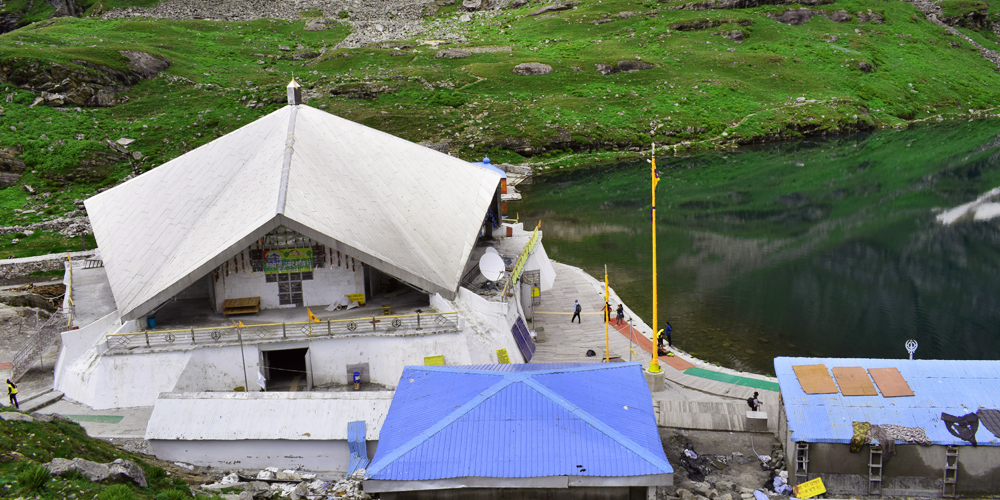
Five revered sites in Uttarakhand where five rivers merge into River Alaknanda to ultimately form the holy River Ganges (Ganga) is called Panch Prayag (in Hindi, 'panch' means five and 'prayag' means confluence). One of the most sacred Indian rivers, Ganges is worshipped as the life-giving goddess and its waters are used in religious rituals. These five places, in descending order of river convergence, are Vishnuprayag, Nandaprayag, Karnaprayag, Rudraprayag and Devprayag. Devotees from across the country visit the sites as it is believed that taking a dip in the water in these five spots cleanses the soul and advances them a step closer to moksha. According to Hindu mythology, when Goddess Ganga began her descent to Earth, her force was formidable. To temper her force, she was said to have been split into 12 channels that flow to reunite completely after Devprayag (where rivers Alaknanda and Bhagirathi meet) to become River Ganga again.
